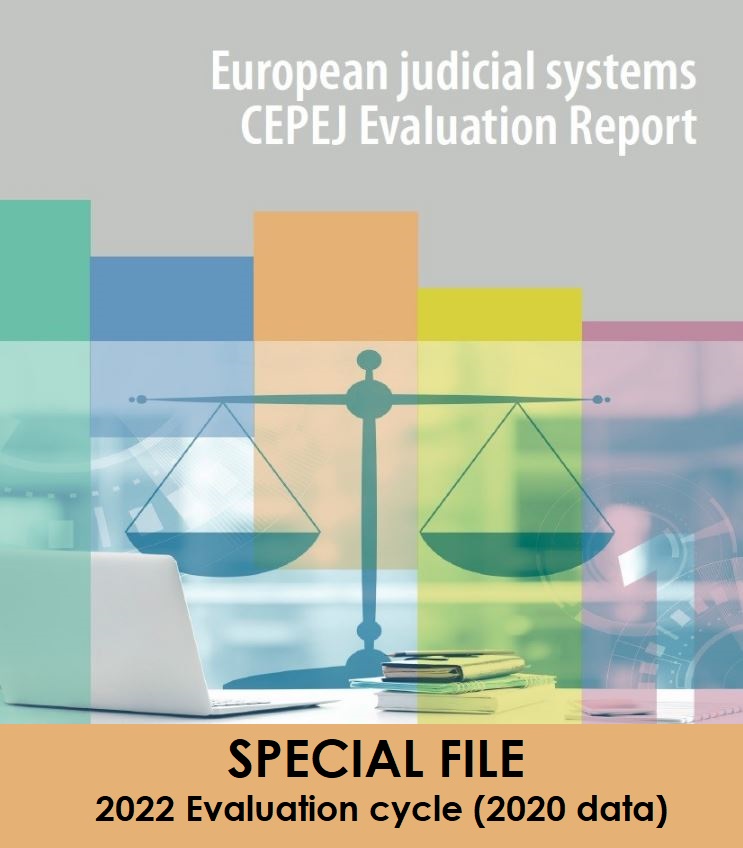Austria
 CEPEJ Member: Georg STAWA
CEPEJ Member: Georg STAWA
Federal Ministry of Justice, Counsellor for the Western Balkans,
Kneza Sime Markovića 2, 11000 Belgrade, Serbia
Austria - European Cyberjustice Network members (ECN)
Thomas GOTTWALD
Austrian federal Ministry of Justice
Martin SCHNEIDER
Austrian federal Ministry of Justice
National Correspondent
Katharina DERFLER
Federal Ministry of Justice
Museumstraße 7, 1070 Vienna
Pilot Court
Bezirksgericht Graz-West
Christine KATTER
Court President
Grieskai 88, 8020 GRAZ
Evaluation Exercise
- Austria: Evaluation exercise - 2022 Edition
- Austria: Evaluation exercise - 2020 Edition
- Austria: Evaluation exercise - 2018 Edition
- Austria: Evaluation exercise - 2016 Edition
- Austria: Evaluation exercise - 2014 Edition
- Austria: Evaluation exercise - 2012 Edition
- Study of 16 comparable countries (by Jean-Paul JEAN, President of the GT-EVAL working group) / 11/2010 (in French)
- Austria: Evaluation exercise - 2010 Edition
- Austria: Evaluation exercise - 2008 Edition
- Austria: Evaluation exercise - 2006 Edition
- Austria: Pilot scheme
Events
Translations of CEPEJ documents (if available):
Not available.
Links to relevant Institutions
- Ministry of Justice
- RIS, Rechtsinformationssystem des Bundes
- Oberster Gerichtshof und Generalprokuratur
- Richtervereinigung
Resources
- Legal texts (Codes, laws, regulations etc.)
Bundeskanzleramt - Case-law of the higher court/s
Bundeskanzleramt - Other documents (e.g. forms)
Austrian justice
Recent developments in the judicial field
- CEPEJ court coaching programme: survey concerning lawyers and notaries, District Court of Linz, Austria (2011) (in German)
- Special mention at the Crystal Scales of Justice 2010 Prize for the initiative "Promoting safer driving", by the Regional Court of Linz and FMG Amor (Austrian Mobility Research), Austria (2010)
Calculating the amount of judges needed to handle the workload – "PAR" After the system of calculating the amount of judges needed to handle the workload ("PAR" = Personalanforderungsrechnung) in first instance run out of trim after more than 10 years of usage, a new system will be set up. The project has been launched recently preparing a concept of implementation to end of July. Beginning next year we will measure the work of judges from reading the documents, doing the hearing, handle the file up to drafting and signing the verdict. After that average time-frames per case types will be calculated. Based on that the amount of judges per court can be (re-)defined. The method of research and calculation will be similar to that applied in Germany, even to get more comparable figures. The project is accompanied by a well known international private consultant company. It will be finished in 3rd quarter of 2008.
Redesign of system of criminal statistics A working group has been set up to redesign the system of criminal statistics. Implementing the reform of preliminary criminal procedure at the beginning of 2008 the link of data from the police-sector to the courts will be set up. Based on that, new analysis of criminal statistics will be considered, serving the needs of court management and the politicians. The project will be supported by the Austrian Institute of law and criminal sociology. The recommendations and guidelines of CEPEJ will be kept in mind.
Austria is reorganizing its system of calculating the amount of personnel needed to handle the workload. Therefore it is also necessary to redesign the Austrian court statistics. A data-warehouse is established in 2008. Out of this new basis statistical data will be extracted in new standardized reports. Especially the work of GT-EVAL and GT-QUAL of CEPEJ is considered in that context.
Organisational chart of the system of justice
Collaborative workspaces:






